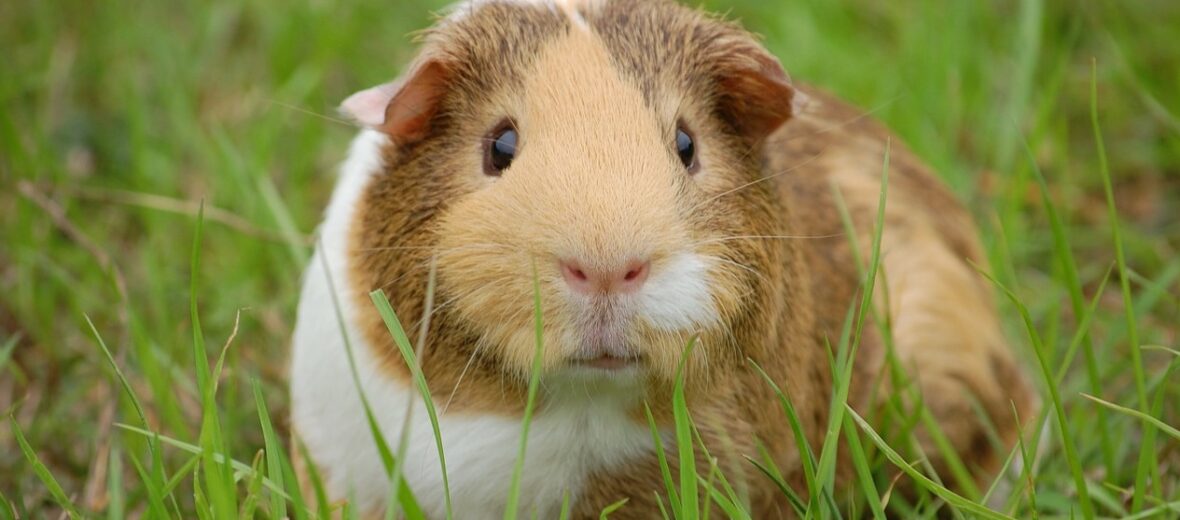
The guinea pig isn’t actually a pig at all. They are rodents. Guinea pigs don’t have a tail, they have 4 toes on their front feet and 3 on their back feet. The Incas domesticated guinea pigs over 3,000 years ago, and the Spanish brought them back from the Andes mountains to Europe. There they were kept as exotic pets. If they aren’t from New Guinea and they aren’t pigs, where the heck did their name come from? That is a mystery. Some theories include that the price for one of these critters was 1 guinea in 16th century England. Their name could have something to do with the squealing sound they make. Perhaps, also, that their meat is said to taste much like suckling pig.
First the Stats…
Scientific name: Cavia porcellus
Weight: Up to 1.6+ lbs.
Length: Up to 10 inches
Lifespan: Up to 8 years
Now on to the Facts!
1.) These little piggies are so social that their need to live with others of their species is so strong that, when they live alone, they can often become depressed, antisocial, aggressive, and will even self harm!
2.) They can’t make their own vitamin C, unlike many other mammals. Humans are in this same boat. And, like humans, if they don’t get enough vitamin C from their diet, they develop scurvy (swollen joints, skin and fur problems, lethargy, loss of appetite, tooth loss, and more).
3.) Although most other rodents have yellow incisors, and even orange, the incisors of guinea pigs are typically white. All teeth continuously grow throughout their life, so they need to chew on the high fiber of grass hay and other hard foods to keep their teeth worn down.
4.) Abyssinian, and Peruvian are the 2 founding species of cavies. There are now 13 recognized breeds of these little piggies.
5.) Guinea pig eye color ranges from dark eyes (like black, brown, or even blue) and pink or red (with a ruby red pupil). Guinea pigs have dichromatic vision (the ability to see only 1 or 2 colors).
But wait, there’s more on the guinea pig!
6.) Female guinea pigs are called sows, males are boars, and babies are pups.
7.) In South America, cuy (guinea pigs) are raised as food and sometimes kept as pets. However, South American cuy are larger and less tame than pet guinea pigs.
Did you know…?
They engage in coprophagy (They eat their own poop). This is necessary to guinea pig health. Guinea pigs who don’t eat some of their feces daily eventually become sick.
8.) Females who don’t give birth before 7 – 8 months of age tend to have a tough pregnancy if bred. This is due to the pubic bones becoming fused into place after 7 – 8 months old, causing a first-time birthing to be very difficult.
9.) They communicate using several types of sounds, including the well-known ‘wheek-wheek’ call – a sign of excitement or to find a friend and a low ‘purring’ sound, which they make when they are feeling happy. They also emit a series of short ‘putt-putt’ noises when they are exploring. Another sound is a chirping noise, often made while in a trance-like state. This sound and behavior is not fully understood, but is thought to be a sound of pining for a lost friend.
10.) Guinea pigs scent mark by rubbing their chin or cheeks across various items, which helps keep their home smelling familiar.
But wait, there’s still more on the guinea pig!
11.) They only sleep for up to 4 hours a day!
12.) When really excited, they can also perform a slick move known as pop corning. This is where they will jump straight up in the air and spin in mid jump!
13.) Cats, coyotes, wolves, snakes, hawks, and owls all prey on these cute critters.
Now a Short Guinea Pig Video!
Also, check out the Critter Science YouTube channel. Videos added frequently!
Want to suggest a critter for me to write about? Let me know here.



